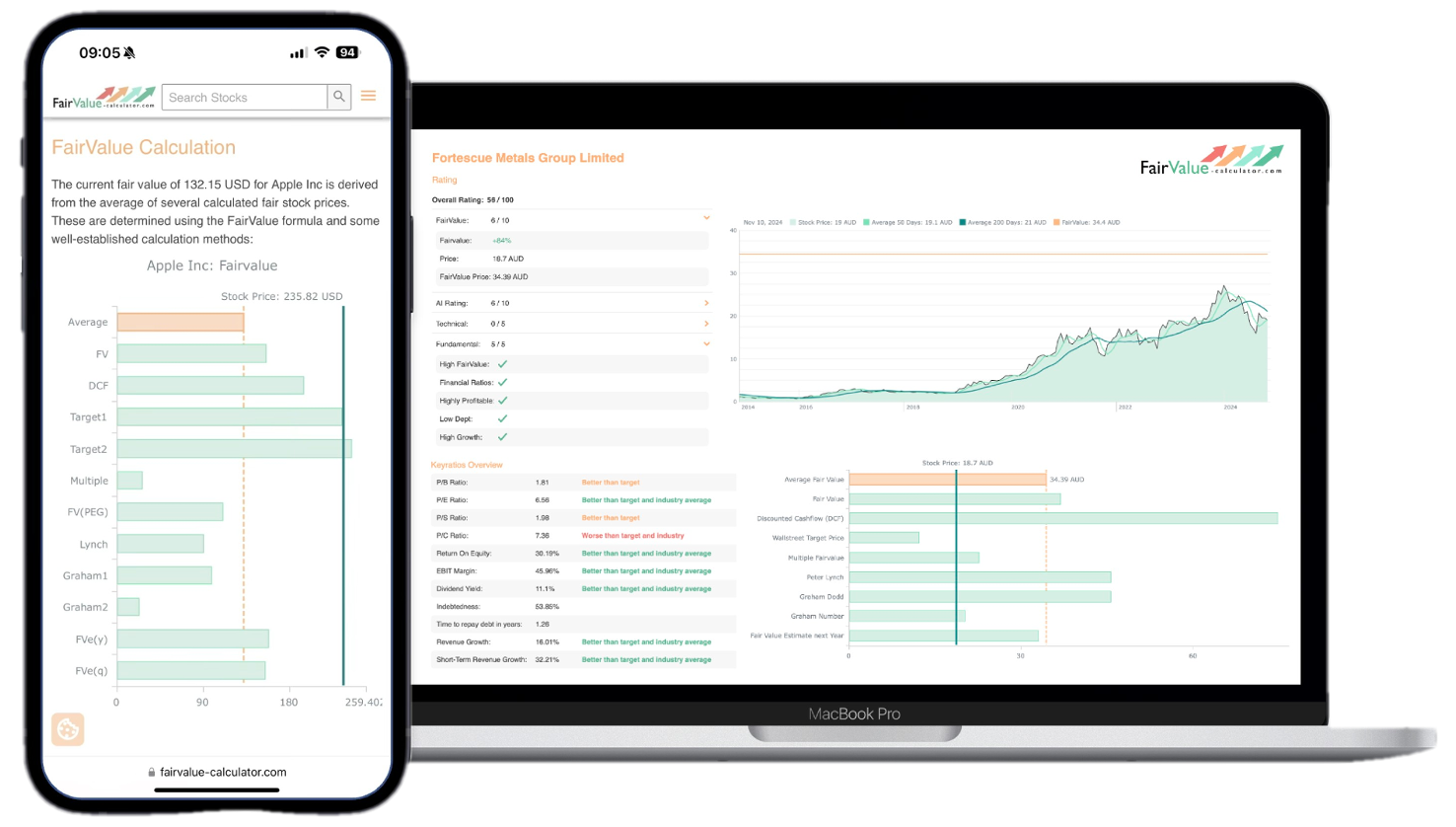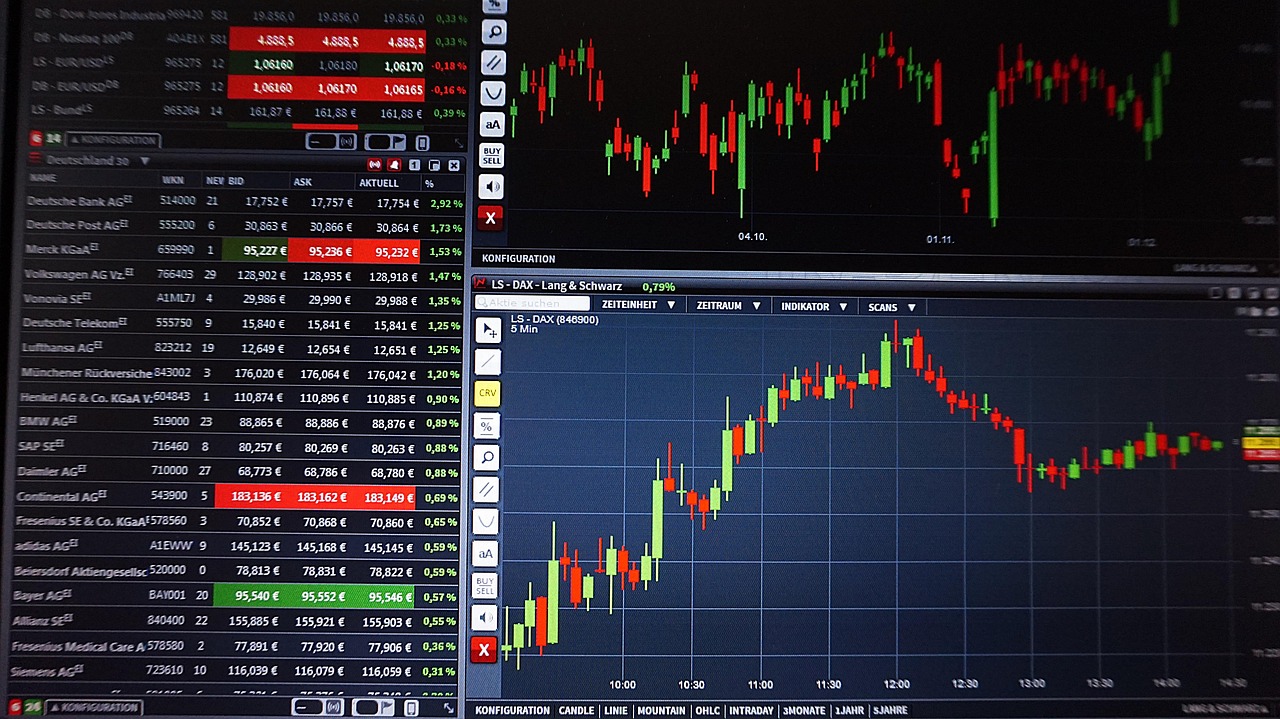A Comprehensive Guide to Market Valuation
The S&P 500 fair value represents the theoretical price at which the index should trade based on fundamental economic factors, earnings projections, and market conditions. Unlike the current market price, which reflects investor sentiment and short-term market dynamics, fair value attempts to determine what the S&P 500 is actually worth based on underlying business fundamentals.
💡 Discover Powerful Investing Tools
Stop guessing – start investing with confidence. Our Fair Value Stock Calculators help you uncover hidden value in stocks using time-tested methods like Discounted Cash Flow (DCF), Benjamin Graham’s valuation principles, Peter Lynch’s PEG ratio, and our own AI-powered Super Fair Value formula. Designed for clarity, speed, and precision, these tools turn complex valuation models into simple, actionable insights – even for beginners.
Learn More About the Tools →Understanding Fair Value vs. Market Price
Fair value serves as a benchmark for determining whether the S&P 500 is overvalued, undervalued, or fairly priced. When the market price trades significantly above fair value, it may indicate an overheated market. Conversely, when trading below fair value, it could present a buying opportunity for long-term investors.
🚀 Test the Fair Value Calculator Now!
Find out in seconds whether your stock is truly undervalued or overpriced – based on fundamentals and future growth.
Try it for Free →The concept becomes particularly important during periods of market volatility, economic uncertainty, or when traditional valuation metrics appear disconnected from market prices. Professional investors, fund managers, and financial analysts regularly compare current S&P 500 levels to various fair value estimates to inform their investment decisions.
Explore our most popular stock fair value calculators to find opportunities where the market price is lower than the true value.
- Peter Lynch Fair Value – Combines growth with valuation using the PEG ratio. A favorite among growth investors.
- Buffett Intrinsic Value Calculator – Based on Warren Buffett’s long-term DCF approach to determine business value.
- Buffett Fair Value Model – Simplified version of his logic with margin of safety baked in.
- Graham & Dodd Fair Value – Uses conservative earnings-based valuation from classic value investing theory.
- Intrinsic vs. Extrinsic Value – Learn the core difference between what a company’s really worth and what others pay.
- Intrinsic Value Calculator – A general tool to estimate the true value of a stock, based on earnings potential.
- Fama-French Model – For advanced users: Quantifies expected return using size, value and market risk.
- Discount Rate Calculator – Helps estimate the proper rate to use in any DCF-based valuation model.
Key Methods for Calculating S&P 500 Fair Value
Earnings-Based Models
The most common approach to determining S&P 500 fair value involves analyzing aggregate earnings of the index constituents. This method typically uses the price-to-earnings (P/E) ratio framework, where fair value equals expected earnings multiplied by a justified P/E ratio.
Analysts calculate the weighted average earnings of all 500 companies, adjust for one-time items and cyclical factors, and then apply a P/E multiple based on historical norms, interest rates, and growth expectations. This earnings-based approach forms the foundation for most professional fair value estimates.
Dividend Discount Models
Some analysts prefer dividend-focused valuation methods, particularly the dividend discount model (DDM). This approach calculates fair value based on the present value of expected future dividend payments from S&P 500 companies, discounted at an appropriate rate that reflects the risk-free rate plus an equity risk premium.
The dividend yield approach offers another perspective, comparing the S&P 500’s current dividend yield to historical averages and treasury yields. When dividend yields are significantly higher than historical norms relative to bond yields, it may suggest undervaluation.
Asset-Based Valuation
Book value approaches examine the collective net worth of S&P 500 companies, using metrics like price-to-book ratios. While less commonly used as a primary valuation method for growth-oriented markets, book value provides a useful floor estimate and helps identify extreme market dislocations.
Some sophisticated models also incorporate replacement cost analysis, examining what it would cost to recreate the assets and market positions of S&P 500 companies in today’s environment.
Factors Influencing S&P 500 Fair Value
Interest Rate Environment
Interest rates profoundly impact fair value calculations through multiple channels. Lower rates increase the present value of future cash flows, justifying higher valuations. They also make stocks more attractive relative to bonds, supporting higher fair value estimates. Conversely, rising rates typically compress fair value estimates.
The relationship between interest rates and fair value isn’t linear, however. Extremely low rates can create asset bubbles, while rapidly rising rates may signal economic stress that affects earnings projections.
Economic Growth Expectations
GDP growth forecasts, corporate earnings growth, and productivity trends all influence fair value calculations. Strong economic growth supports higher earnings multiples and fair value estimates, while recessionary concerns typically compress valuations.
Professional analysts incorporate various economic indicators, including employment data, consumer spending, business investment, and leading economic indicators when adjusting their fair value models.
Market Risk Premium
The equity risk premium, the additional return investors demand for holding stocks instead of risk-free government bonds—significantly affects fair value calculations. This premium fluctuates based on market volatility, economic uncertainty, geopolitical risks, and investor risk appetite.
During periods of high uncertainty, risk premiums increase, reducing fair value estimates. Conversely, periods of stability and confidence can compress risk premiums, supporting higher fair values.
Limitations and Considerations
Model Uncertainty
Fair value calculations inherently involve assumptions about future earnings, growth rates, and appropriate valuation multiples. Small changes in these assumptions can significantly impact fair value estimates, making precision challenging.
Different methodologies often produce varying fair value estimates for the same index at the same time. This uncertainty reflects the complexity of valuing diverse businesses operating in dynamic environments.
Market Efficiency Considerations
The efficient market hypothesis suggests that current market prices already reflect all available information, questioning whether fair value calculations can consistently identify mispricing. However, behavioral finance research demonstrates that markets can deviate from fundamental value for extended periods.
Successful application of fair value analysis typically requires a long-term investment horizon and the patience to wait for market prices to converge toward fundamental values.
Sector and Style Considerations
The S&P 500’s sector composition changes over time, affecting fair value calculations. Technology companies, for example, may justify different valuation multiples than utilities or industrial companies. Fair value models must account for these compositional shifts and their impact on appropriate valuation metrics.
Practical Applications
Investment Decision Making
Individual and institutional investors use S&P 500 fair value estimates to guide asset allocation decisions, market timing strategies, and portfolio rebalancing. When the index trades significantly below fair value, it may support increasing equity allocations.
Risk Management
Financial professionals use fair value analysis to assess portfolio risk and potential downside protection. Understanding the margin of safety between current prices and fair value helps inform position sizing and hedging strategies.
Strategic Planning
Corporate financial officers and pension fund managers incorporate fair value analysis into long-term strategic planning, helping set return expectations and funding requirements for defined benefit plans and other long-term obligations.
Final Words
S&P 500 fair value represents a crucial analytical tool for understanding market valuation and making informed investment decisions. While no single model provides perfect precision, combining multiple approaches and maintaining awareness of their limitations can provide valuable insights into market conditions and investment opportunities.
Regular monitoring of fair value estimates relative to current market levels helps investors maintain perspective during periods of market euphoria or pessimism, supporting more disciplined and successful long-term investment strategies.
FAQs
What is the current S&P 500 fair value?
Fair value estimates change constantly based on earnings revisions, interest rate movements, and economic conditions. Most professional estimates range within 10-15% of current market levels, though this varies significantly during volatile periods. For current estimates, consult recent reports from major investment banks, research firms, or financial data providers.
How often should I check S&P 500 fair value?
For long-term investors, quarterly or semi-annual reviews are typically sufficient, coinciding with earnings seasons when fundamental data updates. Active traders or tactical asset allocators might monitor fair value estimates monthly or during significant market movements. Avoid making frequent portfolio changes based solely on small fair value divergences.
Can fair value predict short-term market movements?
Fair value analysis is primarily designed for long-term investment decisions rather than short-term market timing. Markets can remain over or undervalued relative to fair value for months or even years. Short-term price movements depend more on sentiment, technical factors, and news flow than fundamental valuations.
Which fair value method is most accurate?
No single method consistently outperforms others across all market conditions. Earnings-based models work well during stable economic periods, while asset-based approaches may be more relevant during financial crises. Professional analysts typically use multiple methods and focus on the range of estimates rather than any single calculation.
How do I use fair value in my investment strategy?
Consider fair value as one factor among many in your investment process. When the S&P 500 trades significantly below fair value estimates, it may support increasing equity allocations or maintaining positions during market downturns. When trading well above fair value, consider taking profits or reducing exposure, but always account for your investment timeline and risk tolerance.
What causes fair value to change?
Fair value estimates change based on several factors: corporate earnings revisions, interest rate movements, economic growth forecasts, changes in market risk premiums, and shifts in the S&P 500’s sector composition. Major economic events, policy changes, and market structure evolution can all influence fair value calculations.
Is S&P 500 fair value the same as intrinsic value?
While related concepts, they’re not identical. Intrinsic value represents the true worth of an asset based on all relevant factors, while fair value is a practical estimate using specific methodologies and assumptions. Fair value serves as an approximation of intrinsic value, recognizing that perfect precision is impossible in practice.
How reliable are fair value estimates during market crises?
Fair value models face increased uncertainty during crises as earnings become volatile, risk premiums spike, and traditional relationships break down. However, they often provide valuable perspective during extreme market conditions, helping identify when fear or greed has driven prices far from fundamental values. Use wider ranges and increased caution during turbulent periods.







